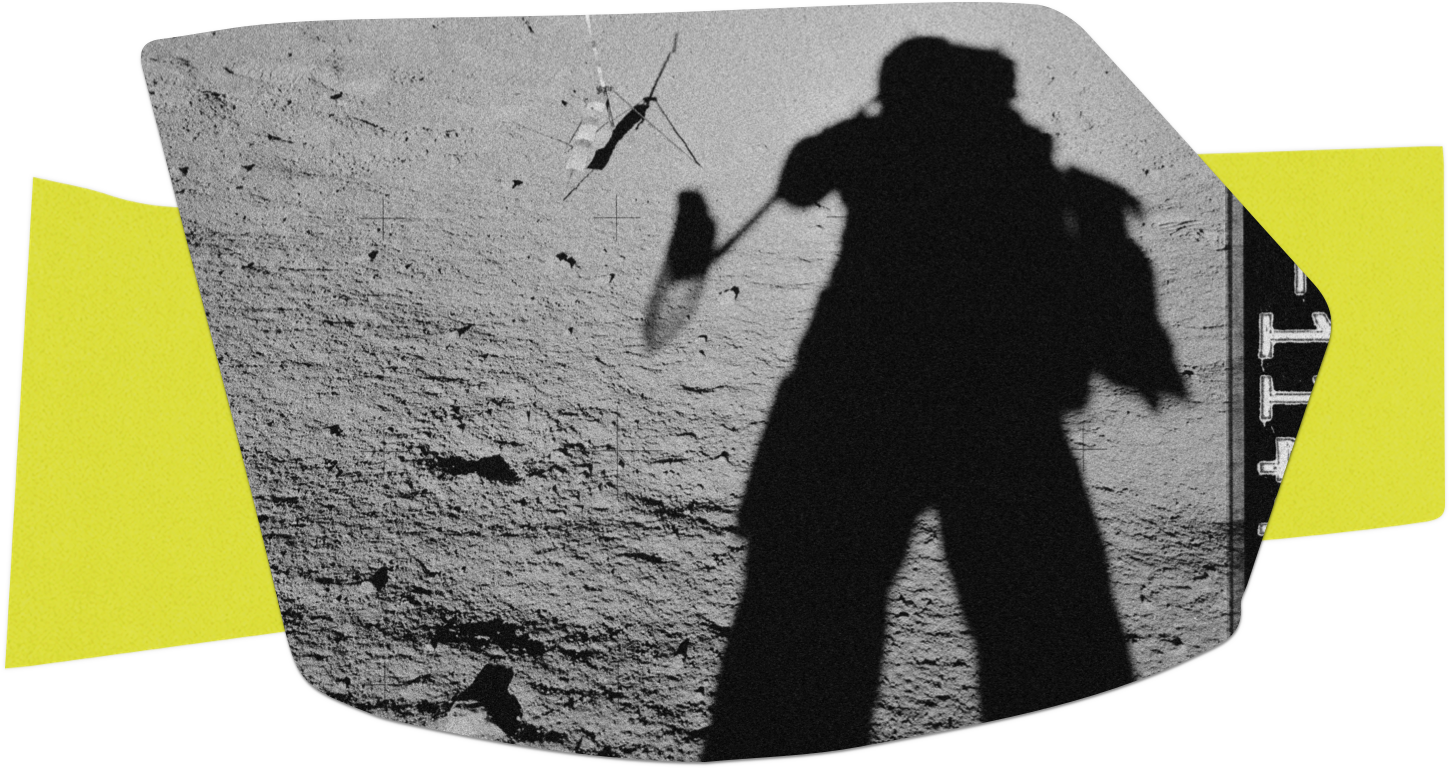
We’re living through an unprecedented time in history. COVID-19 descended upon an already softening economy and weak health care system, during one of the most polarized election cycles in our country's history.
The world around us was already shifting at warp speed, and the coronavirus only accelerated the engine, giving us little time to make sense of our new reality.
In times of uncertainty, it's human nature to retreat
Challenging times can create a sense of paralysis: With a multitude of new, competing theories coming at us, from all angles, we feel overwhelmed. We feel anxious. We’re at home with our families but locked in on computer screens. Sometimes you just need to turn off the iPhone and hunker down in a cardboard box fort with your two-year-old. (For example.)
For companies, this can manifest into a tendency to retreat and react. To pause, go on the defensive, and wait for the storm to pass.
Individually, fear is overtaking our ability to imagine with optimism.Collectively, this results in a world where we let life happen to us, rather than creating a better reality.
It’s also human nature to explore
“Humans are driven to explore the unknown, discover new worlds, push the boundaries of our scientific and technical limits, and then push further. The intangible desire to explore and challenge the boundaries of what we know and where we have been has provided benefits to our society for centuries.”
— NASA, “Why We Explore”
Exploring the future enables us to make sense of our current state: our place in time, in society, in the universe.
Perhaps more importantly, exploring the future now puts us back in the driver's seat. Do we want the future COVID-19, the economy and our politicians grant us? Or do we want to write our own?
Exploration reveals new paths to a better society. And to make the most of them, we need to shift how we think about the future.
Beyond what we consider a moral and personal obligation to respond to this moment with action, there are good business reasons to do so. A year-long study from HBR in the aftermath of the financial crisis found that companies that took a defensive, prevention-focused approach suffered in the long term, while those taking a more progressive approach were 37% more likely to emerge from the downturn as leaders.
While we’re still learning a lot about the pandemic and its effect on society, we’re comforted by our foundational beliefs: that imagination and ingenuity should drive us into the future, not fear.
Shifting our perspective
Changing your mindset during unprecedented times is no easy task. We’re thinking about five perspectives any company must shift if we want to move from allowing the future to happen to us to approaching the future as a place filled with opportunity.
Throughout Athena Issue 02, we'll explore the complexities — and opportunities — that present themselves when we attempt to make these shifts. In the name of building a collective human future, please join us.
The five shifts

Powerlessness to Control
Powerlessness is stoked by fear of what the future holds, taking the mind to the darkest of places and causing us to retreat and react. But do we actually have more control over the future than ever before?Certainly, from a scientific and technological standpoint we do. So what’s holding us back?
How to shift:
Over the past few years, we've conducted a variety of work sessions designed to help clients imagine their future impact in new ways. This practice has revealed a few habits for taking a "control mindset.”
To begin with, acknowledge that no one person or company has total control. Powerlessness is often baked into a feeling of unjustness: That others have it better than us and that the world isn't fair. While this is certainly true, it focuses the mind on what you are lacking, not what resources you have available. We actually start our future planning sessions by looking at drivers of change (economics, technology, the environment, science, infrastructure, demographics). These drivers are often in no one's control, and acknowledging them will help us level the playing field. Our duty is to think ahead about the potential impact these drivers may have, and shape our future accordingly.
Assess what resources you do have. Rather than focusing on your personal or organizational debts, focus on your strengths. At Zeus Jones, our greatest strength is our creativity. With an understanding of drivers of change, we focus our energy on how we can use our creativity to solve the challenges that manifest from them.

Create solutions. Start small, learn and pivot. Using the resources in your wheelhouse, what part of the future can you change? For instance, a couple years back we recognized a change occurring in our food system, and used our skills as creative thinkers and technologists to create ONO, a speculative food brand that embodied our vision of the future of food. This actually led to new clients approaching us to help them make what at the time was an imaginary idea real. Over the course of a few months, we were able to move from feeling like the future of food was out of our control to actually building it.

Pessimism to Optimism
In a time when our tendency has been to look at the future with a dystopian mindset, we think there is power in shifting toward a more optimistic vantage point. If history is any indication, times of economic hardship actually spur the creation of new inventions and innovations.
While this particular moment might feel unprecedented, it also presents incredible challenges for businesses and entrepreneurs to grab. So the question becomes, how does one train their brain to look at a crisis with an optimistic mindset?
How to shift:
Change your environment. “From an early age, babies and children pick up the emotional vibes in their homes. If the atmosphere is relaxed and loving, children blossom even if they innately have a tendency towards anxiety,” says Carol Ward, a licensed psychotherapist in an interview with NBC News. “But if the home environment is tense and filled with dysfunction, optimism is one of the first things to go."If your environment — at work or home — isn’t conducive to feeling like you can think about the future, consider how you might change it up. Carving out a space of your own can go a long way toward putting you in a mindset.
Use the left side of your brain. Research reveals that when people are emotionally stressed, the most active parts of the brain are the amygdala and the right prefrontal cortex. When in positive moods — upbeat, enthusiastic and energized — there is heightened activity in the left prefrontal cortex. By practicing mindfulness, often spurred by activities like meditation and yoga, studies show we can actually train ourselves to use the left side of the brain more — inducing a more optimistic mindset.

Write down the good. A study found that writing down the good can help boost optimism. While this can be applied to your personal life, it's also true in your work: As much of our work focuses on addressing societal issues, we can get bogged down in problem framing. Acknowledging problems is important, to be sure, but moving towards considering how we could make them better is an important step in shifting towards an optimistic view of the future.


Prediction to Imagining
Businesses have often focused on predicting the future. We think this is a broken proposition, and believe that creativity is our greatest tool in challenging times. How do we move from a prediction to imagination mindset? What tools does imagining the future require?
How to shift:
Recognize “predicting” based on trend lines is easy, but rarely accurate. When we started working with clients on trajectory planning, we observed a tendency among futurists and trend analysts to predict where the future was heading. In many ways, predicting is a default: It's baked in clear methodologies that imagining lacks. Yet time and again, the most innovative and successful companies of the past century don’t just predict along trend lines; they take creative leaps.
Trends are inspiration, not facts. Trends are actually often misused as predictions of where the future is definitively headed. What we've found is that trends should actually be used as inspiration for what might be.
When we frame such trends as inspiration for imagining, we allow our brains to head to an entirely different place. In this mindset, the future is ours to create. This also requires unlocking a sense of control and optimism.
Allow many futures to exist. Another hurdle the prediction mindset presents is the notion there is one definitive answer. We've found this is a false premise that wastes energy. Instead, allow multiple, variant futures to exist. By freeing ourselves from getting the answer “right” to exploring the many possibilities, we allow the mind to shift towards creating solutions instead of trying to get the best score.
Keep in mind why this shift is so important. We believe that by shifting toward an imaginative mindset, we unlock our ability to use creativity.


Time as an anchor to Time is irrelevant
Popular prediction frameworks approach time as a defining construct for framing the future. As humans, why do we orient ourselves in timelines? Is defining the future in terms of a timeline even helpful? Or does it place us in a predictive and reactionary mindset, instead of an imaginative one?
How to shift:
Depart from frameworks that rigidly predict time. For instance, when we embarked on our future planning work a few years back, we anchored ourselves in the Horizon model. We have found this model can handicap your ability to imagine and create the future, as it is built on massive assumptions about cultural events. As we’ve just experienced, no one could have accurately predicted the arrival of this particular coronavirus at this particular time.
This is a crucial reason for why preparing for multiple trajectories is essential; we shouldn’t be glued to predicted shifts in society. We believe in preparing for many futures in our trajectory planning, and constantly stay on the lookout for cultural shifts that may accelerate one path or another. We think you should revisit and adjust your long-range planning every year.

Acknowledge time as a human-made construct. Physicist Carlo Rovelli has been exploring this for decades.Rovelli contends that time is a useless construct in the formation of physical laws, and that instead it emerges as a statistical tool. In super-layperson terms: Time is a framework that allows us humans to make sense of our surroundings.It’s more useful in looking to the past than the future. Instead, imagine the future you want, and work toward it.
Assume ten years out is today. So if time is irrelevant, when considering the future, what do we replace it with? Our brains still need anchoring devices to design against. We've found it useful to design solutions for an imagined world that exists 10-15 years out, and to adopt a mindset that ten years from now will occur today. This puts us in a mindset of immediacy, spurring a desire to build new solutions now rather than procrastinate.

Telling to Feeling
The default for exploring futures is to tell a story. Every Orwellian dystopia is centered on a classic narrative arc, where the storyteller controls how the viewer or reader navigates through their depicted future. Emotions are treated as a result, an after-effect of the story told. What happens when we allow emotions to lead us in an exploration of the future?
How to shift:
Imagine a feeling. Ideas are a dime-a-dozen, and future planning often falls down when it lives solely as obtuse bullets on a Keynote slide. Instead, make people feel. Some of our most successful futures work centers around building “Creative Universes.” That has us imagining many dimensions of the future, today, and building out an entire world. What does this future feel like? What’s the best way of evoking that feeling? Feelings are not shared universally, so we start with descriptions that call out specific cultural references and metaphors; this first step is about landing on shared associations and aspirations.

Build it. Sometimes, to capture a feeling and the offering that will create it, we’ll build out a physical space — where you can touch and feel and even smell the future product offerings. Other times, that means creating different creative and experience stories. Occasionally it means making digital product or service experiences and then having some guinea pigs navigate them. The avenues for evoking emotions are endless — it’s about finding an execution that can capture your specific offering, and also then become a sales tool for rallying your organization. We believe that if you can make people feel it, you can make it feel inevitable.
Show it in culture. The future shouldn’t exist in a bubble. You have to build the world around it too. What are the conditions of the future you’ve created? We’ve built out site experiences that get the audience in the headspace of the society we’re building. We’ve also assembled groups of think tanks that experience the product or future and react in real time. This is a crucial step: not only is it important to have your prototype of the future built upon by other people, but you need to show the world you’re going to help create.
The upshot of all of this:
Prediction means you’re relying on what was true before. And as we’ve seen, what’s “true” can change radically — and radically fast. Instead, we’re focused on mindsets and tools that help us all imagine and create better futures — as companies and as people.
Ready to plan the future of your business?
We’ve created a trend report and workbook to help. Fill out the form below and we’ll send it right over.
Contributors
In collaboration with
- Sarah Herberg
- Megan Harris
- Jack Samels
Photography courtesy the Project Apollo Archive and the Metropolitan Museum of Art. Most of these photos document the 1969-1972 spaceflight program that successfully landed humans on the moon.



